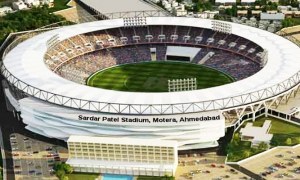🕑 Reading time: 1 minute
Precast concrete construction system has its own characteristics which influence the layout, span length, construction depth, and stability system to a great extent. In precast concrete construction, majority of structural members are manufactured in manufacturing plants away from the construction site. After that, they are delivered to the project site to be erected. Various connections have been developed to connect different types of structural elements like beam to column connection and panel to panel connection. In this manner, the imposed loads are transferred from superstructure to the foundation. Designers should consider the possibilities, restrictions, detailing, manufacturer, transport, erection and serviceability stages before finalizing the design of precast concrete structure.Contents:
Types of Precast Systems
In order to understand the construction of precast concrete structure, different precast systems shall be known. There are four major types of precast systems which are classified based on the on the load bearing structure:1. Large Panel System
Large panel systems are useful for the construction of apartments and hotels. It consists of large walls and floor concrete panels connected in the vertical and horizontal directions. Both horizontal and vertical panels withstand gravity loads. There are three arrangements of large panel system based on wall layouts which include cross-wall system, longitudinal-wall system, two-way system.
Fig. 1: Large Panel Precast Concrete System Construction
2. Frame System
It is suitable for the construction of car parks, stadia, and offices. Precast frames can be constructed using either linear elements or spatial beam-column sub assemblages. Precast beam-column sub-assemblages have the advantages that the connecting faces between the sub-assemblages can be placed away from the critical frame regions. However linear elements are generally preferred because of the difficulties associated with forming, handling and erecting spatial elements.
Fig. 2: Precast Concrete Frame Structure erected within four weeks
3. Slab-Column System with Shear Wall
In this system, gravity loads supported by slab-column structure whereas shear walls withstand lateral loads. There are two types of slab-column system with shear walls namely; lift slab system with walls and pre-stressed slab-column system.
Fig. 3: Precast Column-slab System with Shear Walls
Elements in Precast Concrete Building Systems
Precast concrete members are manufactured in factory under controlled conditions to keep standard dimensions and tolerances. Structural elements used in the construction of precast concrete buildings include:- Precast concrete wall (Panels), Fig.4
- Precast Slabs, Fig. 5 and 6
- Precast Beam and Girders, Fig.7
- Precast Columns, Fig. 8
- Precast Stairs, Fig. 9

Fig. 4: Precast Concrete Panel

Fig. 5: Hollow Precast Concrete Floor

Fig. 6: Details of Hollow Precast Concrete Floor

Fig. 7: Precast Concrete Beam

Fig. 8: Precast Concrete Columns

Fig. 9: Precast Concrete Stairs
Precast Concrete Construction Considerations
1. Erection Sequence
Precast concrete members shall be erected according to preplanned sequence. The erection plan is commonly prepared drawings If it is important for structural stability and for access to connections at specific location. The erection sequence shall avoid multiple handling of elements. Finally, a trial erection operation should be considered to identify any unforeseen erection difficulties.2. Erection Safety
Safety during the handling and erection of precast concrete elements is substantially important. Therefore, all machines and equipment employed precast concrete element handling and erection need to be maintained to a high standard, load tested, and be suited to the intended utilization.3. Erection Tolerances
Generally, the precast unit should be erected in accordance with the tolerances provided by applicable codes, unless other tolerances are used in the design and specifications.4. Rigging
A rigging system for handling and erecting precast elements requires careful and thorough preplanning. It may be necessary to equalize loads between lifting points on certain precast elements, such as beams or flat slabs. Lifting accessories may be in the form of slings/cables, hooks or shackles. The selection of such components should take into consideration the forces due to all operations involved in the handling and erection of the precast units. Headroom availability and maneuverability during erection may also have an impact on the type of rigging system selected.5. Temporary bracing
Precast concrete elements must be adequately braced and supported during all phases of erection to ensure proper alignment and structural integrity until permanent structural connections are completed.6. Leveling shims
Leveling shims should be formed from a suitably durable material and should have adequate strength to carry the full imposed loads. Leveling shims carry the full construction load of the precast element and must provide adequate support to prevent movement until the element is incorporated in the main structure.7. Propping
All temporary propping requirements must be shown on the erection drawings. The design of temporary propping systems should be in accordance applicable codes. Temporary propping should provide full support for all construction loads.Precast Concrete Construction Procedure
1. After the completion of construction preparations, the layout of the structure is set. 2. Then, the foundation of the columns are constructed (Fig. 10)
Fig. 10: Foundation for Precast Concrete Columns

Fig. 11: Final Adjustment and Installation of Columns

Fig. 12: Install Precast Concrete Columns

Fig. 13: Large Panel Precast Concrete System Construction

Fig. 14: Precast Beam Erection

Fig. 15: Placement of Hollow Core Precast Concrete Slab on Walls

Fig. 16: Precast Concrete Slab Placement
Types of Connections
- Beam to Column Connections (Fig. 17, 18, and 19)
- Column to floor connection (Fig. 20)
- Panel to Panel Connections (Fig. 21 and 22)

Fig. 17: Expensive but Safe Cleated Connector

Fig. 18: Sliding Plate Connections

Fig. 19: Beam to Column Seated Connection

Fig. 20: Seated Connection

Fig. 21: Deep Nib Connection Between Walls Provide Large Complimentary Shear Stiffness and Strength

Fig. 22: Vertical Joint Using Deep Nib
Structural Stability
The stability of precast concrete structural systems are provided through bracing. There are number of techniques through which structures are braced, as illustrated in the following figure.
Fig. 23: Bracing Techniques



